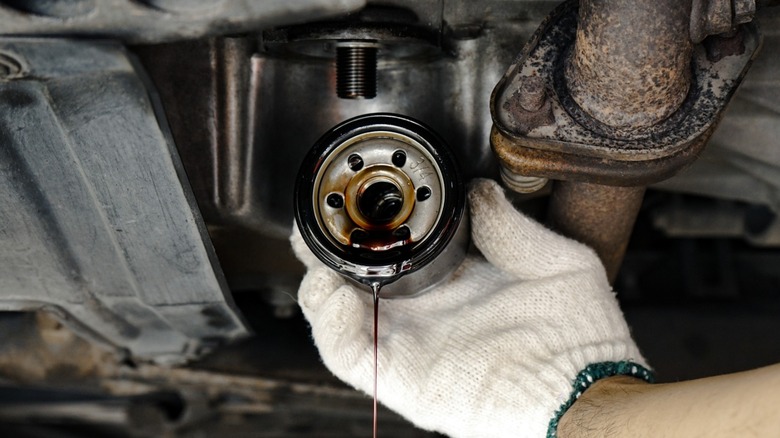
For an internal combustion engine to run properly and smoothly, it needs a steady supply of lubrication to prevent friction, facilitate the movement of internal parts, and impede the development of excessive heat. As most readers are probably aware, that lubrication comes in the form of engine oil and is specifically engineered to withstand the harsh conditions inside a car's motor while being thin enough to flow smoothly. Engine oil is absolutely vital for your vehicle's operation. However, as oil moves
through your engine, it degrades over time and loses its ability to perform the duties described above. Because of this, auto manufacturers outline engine oil replacement intervals to help keep the car running smoothly and avoid damage.
Changing the engine oil is an essential but basic task that even most automotive beginners can handle with ease. It involves draining the old oil out of the engine and replacing it with the proper amount of fresh oil. However, replacing the oil isn't the only step you need to perform — it's also critical that you replace the oil filter each time you change the oil. The filter's job is to help keep the oil free from pollutants and debris in between oil replacements. It performs a vital job, as those pollutants and debris can contribute to catastrophic engine damage.
Considering the oil filter's importance, it makes sense that you should never skip out on replacing it. However, if you're curious what an oil filter that's never been replaced looks like, one Instagram user has you covered. In a recent viral reel, user hypemax_ shares footage of an oil filter that wasn't replaced for nine years. Let's take a closer look and break down some of what you're seeing in the video.
Read more: 10 Used Cars You Can Safely Buy With Over 100,000 Miles
The Petrified Filter
In the video linked above, you can see that the filter is extremely black and impacted with old oil and grime. The user describes the filter material as "being hard as a rock," and it's obvious from the footage that the filter has not functioned properly in a very long time. This makes sense, as the filter's job is to prevent solid particles, like metal shavings and other debris, and oil sludge or grime from getting into the engine and causing severe damage. However, if you never replace the filter, it will eventually clog up, and all of that debris and sludge will form a semi-solid mass of crud in the oil filter material. As shown in the video, the filter is hard to the touch, and when the technician begins scraping it with a tool, you can see chunks and flakes of grime falling off the paper filter.
In theory, because oil must pass through the filter to get to the engine, a clogged oil filter would stop any oil from reaching the engine, resulting in a catastrophic lack of lubrication and extreme damage. Fortunately, the engineers who design and build engine oil filters had the foresight to anticipate apathetic and careless drivers. To prevent a clogged filter from causing a complete lack of lubrication, oil filter manufacturers build a bypass valve into the filter. If a filter clogs up, the oil pressure will cause that valve to open, allowing oil to continue flowing into the engine. The catch is that the bypass valve cannot filter oil, so the oil entering the engine is unfiltered and likely contains debris and sludge. While that's better than no lubrication at all, it's still unsafe for your engine and will likely lead to severe damage over time.
Want the latest in tech and auto trends? Subscribe to our free newsletter for the latest headlines, expert guides, and how-to tips, one email at a time.
Read the original article on SlashGear.












